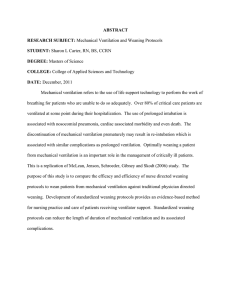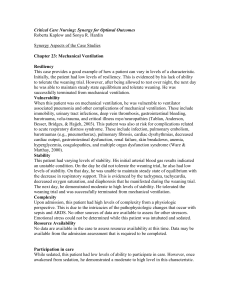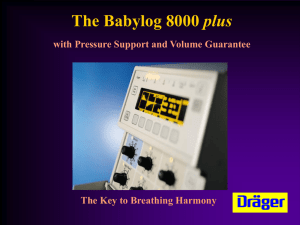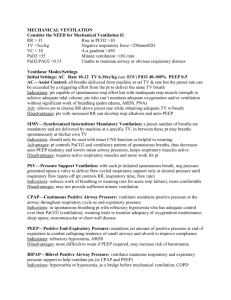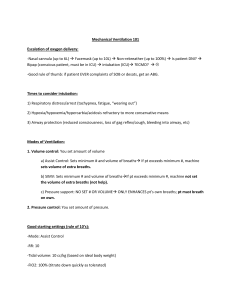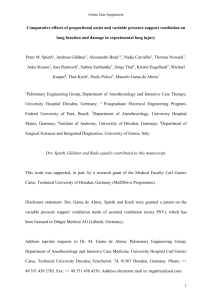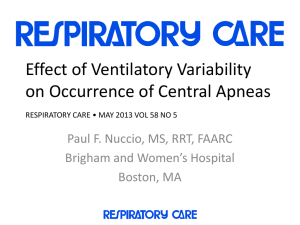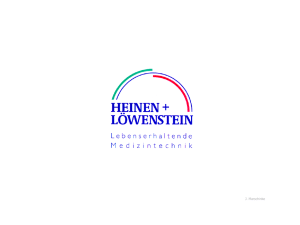Diaphragmatic electromyography analysis during two different
advertisement
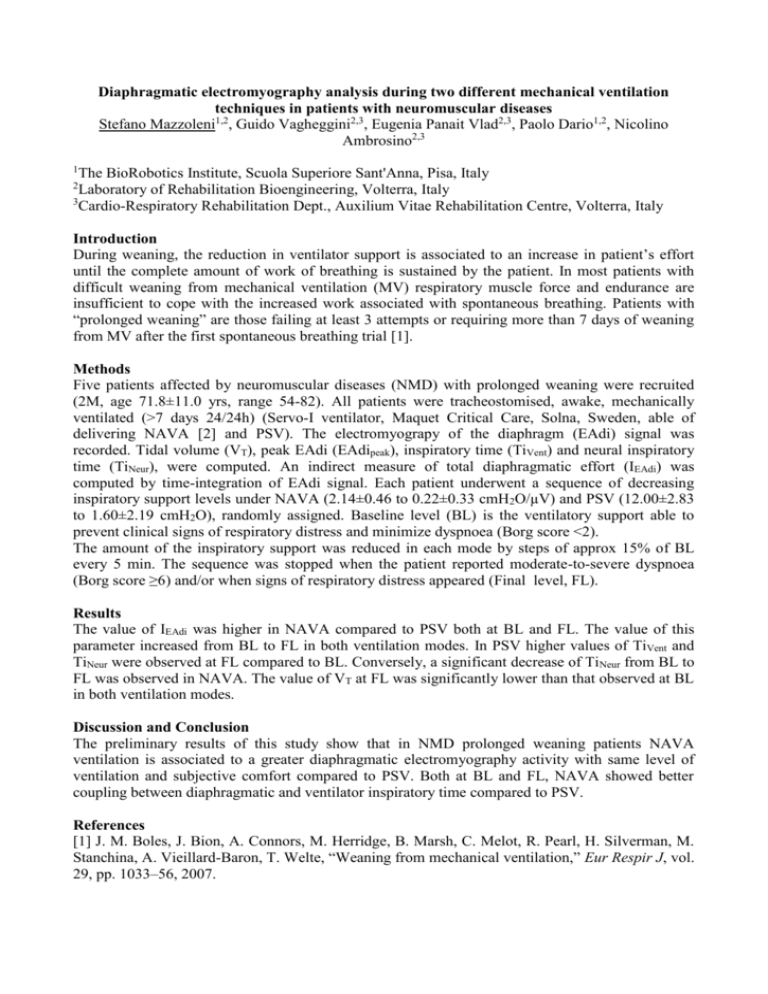
Diaphragmatic electromyography analysis during two different mechanical ventilation techniques in patients with neuromuscular diseases Stefano Mazzoleni1,2, Guido Vagheggini2,3, Eugenia Panait Vlad2,3, Paolo Dario1,2, Nicolino Ambrosino2,3 1 The BioRobotics Institute, Scuola Superiore Sant'Anna, Pisa, Italy Laboratory of Rehabilitation Bioengineering, Volterra, Italy 3 Cardio-Respiratory Rehabilitation Dept., Auxilium Vitae Rehabilitation Centre, Volterra, Italy 2 Introduction During weaning, the reduction in ventilator support is associated to an increase in patient’s effort until the complete amount of work of breathing is sustained by the patient. In most patients with difficult weaning from mechanical ventilation (MV) respiratory muscle force and endurance are insufficient to cope with the increased work associated with spontaneous breathing. Patients with “prolonged weaning” are those failing at least 3 attempts or requiring more than 7 days of weaning from MV after the first spontaneous breathing trial [1]. Methods Five patients affected by neuromuscular diseases (NMD) with prolonged weaning were recruited (2M, age 71.8±11.0 yrs, range 54-82). All patients were tracheostomised, awake, mechanically ventilated (>7 days 24/24h) (Servo-I ventilator, Maquet Critical Care, Solna, Sweden, able of delivering NAVA [2] and PSV). The electromyograpy of the diaphragm (EAdi) signal was recorded. Tidal volume (VT), peak EAdi (EAdipeak), inspiratory time (TiVent) and neural inspiratory time (TiNeur), were computed. An indirect measure of total diaphragmatic effort (IEAdi) was computed by time-integration of EAdi signal. Each patient underwent a sequence of decreasing inspiratory support levels under NAVA (2.14±0.46 to 0.22±0.33 cmH2O/µV) and PSV (12.00±2.83 to 1.60±2.19 cmH2O), randomly assigned. Baseline level (BL) is the ventilatory support able to prevent clinical signs of respiratory distress and minimize dyspnoea (Borg score <2). The amount of the inspiratory support was reduced in each mode by steps of approx 15% of BL every 5 min. The sequence was stopped when the patient reported moderate-to-severe dyspnoea (Borg score ≥6) and/or when signs of respiratory distress appeared (Final level, FL). Results The value of IEAdi was higher in NAVA compared to PSV both at BL and FL. The value of this parameter increased from BL to FL in both ventilation modes. In PSV higher values of TiVent and TiNeur were observed at FL compared to BL. Conversely, a significant decrease of TiNeur from BL to FL was observed in NAVA. The value of VT at FL was significantly lower than that observed at BL in both ventilation modes. Discussion and Conclusion The preliminary results of this study show that in NMD prolonged weaning patients NAVA ventilation is associated to a greater diaphragmatic electromyography activity with same level of ventilation and subjective comfort compared to PSV. Both at BL and FL, NAVA showed better coupling between diaphragmatic and ventilator inspiratory time compared to PSV. References [1] J. M. Boles, J. Bion, A. Connors, M. Herridge, B. Marsh, C. Melot, R. Pearl, H. Silverman, M. Stanchina, A. Vieillard-Baron, T. Welte, “Weaning from mechanical ventilation,” Eur Respir J, vol. 29, pp. 1033–56, 2007. [2] L. Piquilloud, L. Vignaux, E. Bialais, J. Roeseler, T. Sottiaux, P. F. Laterre, P. Jolliet, and D. Tassaux, “Neurally adjusted ventilatory assist improves patient-ventilator interaction,” Intensive Care Med., vol. 37, pp. 263-71, 2011.
